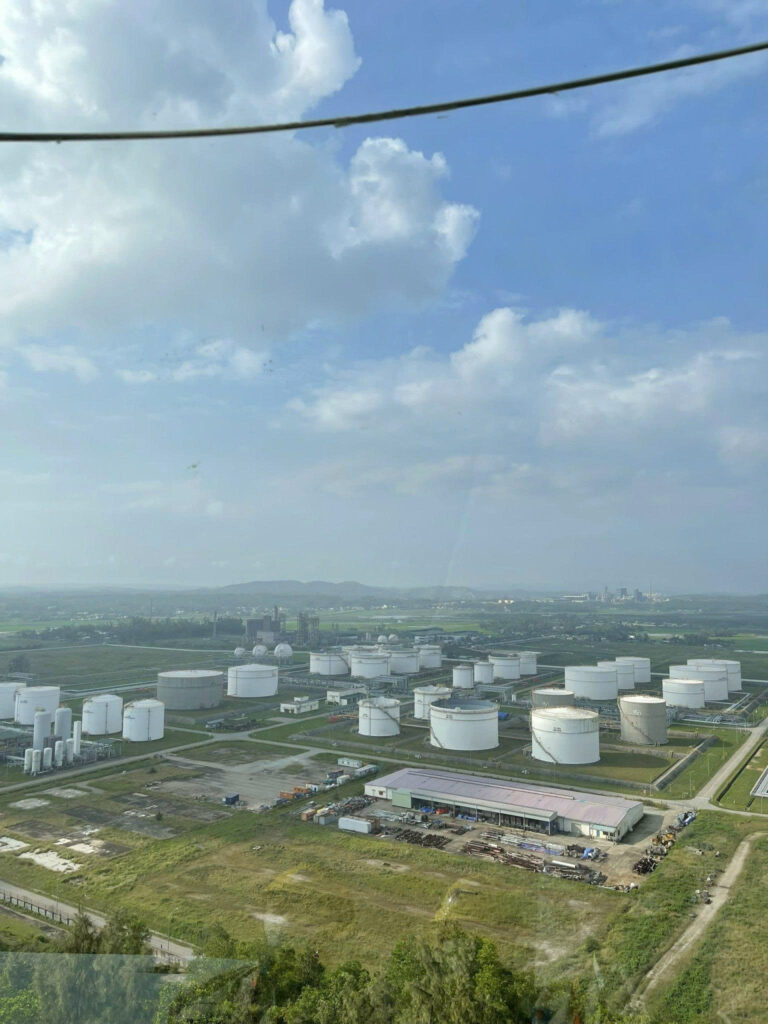Climate change is one of the most severe global challenges today, requiring collective action from the entire international community. In Vietnam, alongside its commitment to achieving net-zero emissions by 2050, the development of a Greenhouse Gas (GHG) Emissions Reduction Plan is not only an inevitable trend but also a legal obligation under the Environmental Protection Law 2020 and its guiding documents. This step follows the GHG inventory process—shifting from emission identification to implementing specific, effective, and sustainable emission reduction solutions.
To conduct a GHG inventory, GHG-emitting facilities (organizations, businesses, and individuals) must comply with legal regulations such as the Law on Environmental Protection 2020 (issued on November 17, 2020, effective from January 1, 2022), Decree No. 06/2022/NĐ-CP (issued on January 7, 2022), Decree No. 119/2025/NĐ-CP (issued on June 9, 2025) amending Decree No. 06/2022/NĐ-CP, and Decision No. 13/2024/QĐ-TTg (issued on August 13, 2024). Facilities listed in Decision No. 13/2024/QĐ-TTg must submit GHG inventory reports for the base year 2024 to provincial authorities by March 2025. These legal documents provide a clear framework for preparing and implementing GHG emissions reduction plans to ensure legality and accuracy.
1. Why is a GHG Emissions Reduction Plan necessary?
-
Compliance with legal regulations: Under the Environmental Protection Law 2020 and Decree No. 06/2022/NĐ-CP, major GHG-emitting facilities listed in Decision No. 13/2024/QĐ-TTg are required to conduct periodic inventories and prepare a GHG Emissions Reduction Plan for the period 2026–2030, to be submitted to the provincial People’s Committee no later than December 31, 2025.
-
Integration and competitiveness enhancement: Conducting inventories and developing GHG reduction plans helps businesses meet international environmental standards, facilitating exports, global market access, and access to green financial support.
-
Production cost optimization and efficient resource use: GHG inventories allow businesses to identify energy-intensive or high-emission activities and adopt technical improvements to save costs and enhance production efficiency.
-
Demonstrating social responsibility and brand enhancement: Proactive emission reduction efforts help businesses build a positive and sustainable image with customers, partners, and investors.
2. When must the GHG Emissions Reduction Plan be prepared?
According to Article 13 of Decree No. 06/2022/NĐ-CP and Decision No. 13/2024/QĐ-TTg, the timeline is as follows:
-
Mandatory entities: Facilities listed in the annex of Decision No. 13/2024/QĐ-TTg or those emitting ≥ 3,000 tons of CO₂e/year.
-
Deadline: By December 31, 2025, facilities must submit their 2026–2030 GHG Emissions Reduction Plan to the provincial People’s Committee or sectoral management agency.
-
Update frequency: The plan must be reviewed and updated at least once every two years, or sooner if requested by authorities or if there are significant changes in operations.
➡️ With only four months remaining until the submission deadline, this is the “golden period” for businesses to start developing their plans to ensure timely approval and implementation.
3. What should businesses do to develop a GHG Emissions Reduction Plan?
To build an effective plan, emitting facilities should:
-
Review the latest GHG inventory results, identify key emission sources by Scope (1, 2, and 3).
-
Analyze emission reduction potential at each source, assessing technical, financial, and environmental feasibility.
-
Select appropriate mitigation measures, such as: optimizing production processes, energy saving, fuel switching, applying clean technologies, recycling materials, purchasing carbon credits, etc.
-
Develop an action plan for the 2026–2030 period, including: specific reduction targets, resources, timelines, costs, and coordinating entities.
-
Integrate the plan into the business’s development strategy and align it with domestic and international green transition support programs.
SOLEN’S SERVICES!!!
SOLEN has been assisting many businesses in completing GHG inventory reports and developing GHG Emissions Reduction Plans aligned with ISO 14064-1, while fully meeting Vietnam’s legal requirements.
When partnering with SOLEN, you will receive:
✅ Detailed guidance from experienced experts with international certifications
✅ Standardized tools and templates for easy application
✅ In-depth analysis of emission reduction potential
✅ Strategic consulting to integrate sustainability and ESG goals
✅ Support in working with state authorities and access to climate finance programs
Key Legal Documents
-
Environmental Protection Law 2020 (Law No. 72/2020/QH14), issued Nov 17, 2020, effective Jan 1, 2022
-
Decree No. 06/2022/NĐ-CP dated Jan 7, 2022 on GHG reduction and ozone layer protection
-
Decree No. 119/2025/NĐ-CP dated Jun 9, 2025 amending Decree 06/2022/NĐ-CP
-
Decision No. 13/2024/QĐ-TTg dated Aug 13, 2024 by the Prime Minister listing GHG-emitting facilities required to conduct GHG inventories
-
Circular 17/2022/TT-BTNMT: Technical guidance for GHG inventory and reduction in the waste sector
-
Circular 38/2023/TT-BCT: Technical guidance for the industrial sector
-
Circular 23/2023/TT-BNNPTNT: Forestry sector GHG inventory and mitigation
-
Circular 13/2024/TT-BXD: Technical procedures for the construction sector
-
Circular 63/2024/TT-BGTVT: Technical regulations for the transport sector
-
Circular 19/2024/TT-BNNPTNT: Technical regulations for the livestock sector
…and many others…
Contact us today for consultation and support in developing your GHG Emissions Reduction Plan!
SOLEN Environmental Solutions JSC
☎ Office phone: +84 942388256
📧 Email: contact@solenvn.com
🏢 Address: 136 Hang Bac Street, Hoan Kiem Ward, Hanoi City
🌐 Website: https://solenvn.com/



 Tiếng Việt
Tiếng Việt 日本語
日本語